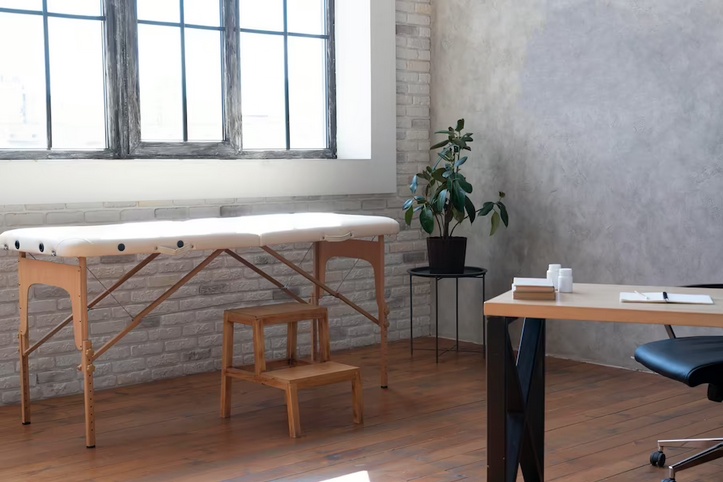Introduction
In the realm of spinal health, innovation continues to shape the way we approach pain management and well-being. Chiropractic care has long been recognized for its effectiveness in addressing spinal issues, and recent advancements have led to the development of specialized tools like chiropractic decompression tables. These tables bring together the principles of chiropractic care and spinal decompression therapy to offer a unique solution for individuals suffering from spinal discomfort. In this article, we will delve into the science behind chiropractic decompression tables, their benefits, and the potential they hold in redefining spinal relief.
Understanding Chiropractic Decompression Tables
Chiropractic decompression tables represent a fusion of chiropractic techniques and spinal decompression therapy. These tables are designed to provide controlled traction to the spine, creating negative pressure within spinal discs and promoting healing. By combining chiropractic adjustments with decompression therapy, these tables offer a comprehensive approach to spinal health.
Key Features:
-
Traction Mechanism: Chiropractic decompression tables utilize a sophisticated traction mechanism. This mechanism applies gentle and controlled pulling forces to the spine, targeting specific areas of concern.
-
Adjustability: Similar to traditional chiropractic tables, decompression tables are adjustable to accommodate individual patient needs. Chiropractors can tailor the treatment based on the patient's condition.
-
Comfort: Patient comfort is a priority in chiropractic care. Decompression tables are designed with cushioning and support to ensure that patients remain at ease during treatments.
-
Cyclic Motion: Many chiropractic decompression tables incorporate cyclic motion, where the traction force alternates between tension and relaxation. This cyclic motion aids in the exchange of nutrients within spinal discs.
The Science Behind Chiropractic Decompression Tables
The underlying science of chiropractic decompression tables revolves around the principles of spinal decompression therapy and chiropractic adjustments. Let's delve into how these components work together to provide relief:
-
Spinal Decompression Therapy: The controlled traction created by the decompression table elongates the spine, reducing pressure within spinal discs. This negative pressure encourages the influx of nutrients and oxygen into the discs, promoting healing. Additionally, as the pressure decreases, any bulging or herniated discs can retract, alleviating pressure on nerves and reducing pain.
-
Chiropractic Adjustments: Chiropractic decompression tables incorporate elements of traditional chiropractic adjustments. By combining traction with adjustments, chiropractors can precisely target misaligned vertebrae, restoring proper alignment and optimizing nerve function.
Benefits of Chiropractic Decompression Tables
-
Pain Relief: Chiropractic decompression tables offer effective pain relief by addressing the root causes of spinal discomfort. By reducing pressure on nerves and discs, they alleviate pain associated with herniated discs, sciatica, and other spinal issues.
-
Non-Invasive Solution: As a non-invasive alternative to surgical procedures, chiropractic decompression tables provide a safer option for individuals seeking relief from spinal pain without the risks associated with surgery.
-
Holistic Healing: By promoting the exchange of nutrients within spinal discs, chiropractic decompression tables support the body's natural healing processes. This holistic approach tackles the underlying issues rather than masking symptoms.
-
Customized Treatment: Chiropractors can tailor treatments using decompression tables to suit each patient's unique condition. This individualized approach enhances the effectiveness of the therapy.
-
Improved Mobility: Chronic pain can hinder mobility. Chiropractic decompression tables address this by alleviating pain, allowing patients to regain their range of motion and engage in physical activities.
-
Avoidance of Medications: In an era where concerns about long-term medication use are increasing, chiropractic decompression tables offer a drug-free option for pain management.
Redefining Spinal Relief
Imagine an individual whose daily life is marked by chronic lower back pain, making even the simplest tasks a struggle. Traditional treatments have provided only temporary relief, leaving them seeking a more sustainable solution. This is where chiropractic decompression tables enter the picture.
As the individual lies on the chiropractic decompression table, the traction mechanism is activated. Gradually, the spine is gently elongated, and the pressure within the discs decreases. This process relieves pressure on pinched nerves and promotes healing. As the individual undergoes a series of sessions, they experience a remarkable transformation. The pain that once controlled their life begins to recede. With pain subsiding, their mobility improves, and they can once again enjoy activities that were once off-limits.
Conclusion
Chiropractic decompression tables represent a significant advancement in spinal health care. By combining the principles of spinal decompression therapy and chiropractic adjustments, these tables offer a comprehensive approach to pain relief and well-being. With benefits ranging from pain alleviation to improved mobility and holistic healing, chiropractic decompression tables redefine the way we perceive spinal relief. As individuals seek non-invasive, effective, and drug-free solutions for their spinal issues, these tables stand as a testament to the power of innovation in promoting a healthier and pain-free life.


No comments yet